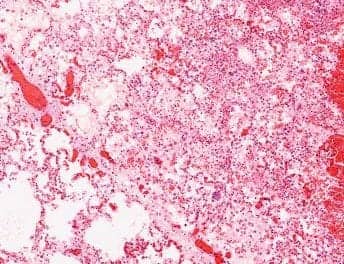The CDC says 6 vials of potentially deadly smallpox virus were discovered July 1st in “an unused corner of a storage room” on the campus of the National Institutes of Health in Bethesda, Md, according to federal health officials cited in an NBC news report.
From the NBC report:
The vials labeled variola, commonly known as smallpox, were discovered July 1 on the campus of the National Institutes of Health in Bethesda, by surprised employees preparing for an upcoming move, according to the CDC. NIH staff immediately notified the CDC’s Division of Select Agents and Toxins, or DSAT.
Tests confirmed the samples contained smallpox DNA. On Monday, they were safely transferred to the CDC’s high-containment laboratory in Atlanta.
The vials weren’t breached and biosafety personnel detected no risk of exposure to lab workers or the general public, CDC spokesman Tom Skinner said in a statement. Further tests that can take up to two weeks will determine whether the samples are viable, meaning they can grow in tissue culture, with the potential to spread.
The virus samples may have been in the storage unit since the laboratory was transferred from NIH to FDA in 1972, along with the responsibility for regulating biologic products. They appear to date from the 1950s, officials said.
The last known natural case of smallpox was in Somalia in 1977, according to the World Health Organization, which declared the disease eradicated in 1980 following a global immunization campaign.
Since then, only a small amount of the virus has been kept alive under tightly controlled conditions for medical research.











Sept 11 1978 Janet Parker died in Birmingham , England from smallpox. Unless you are injected with it, any exposure follows the natural way.